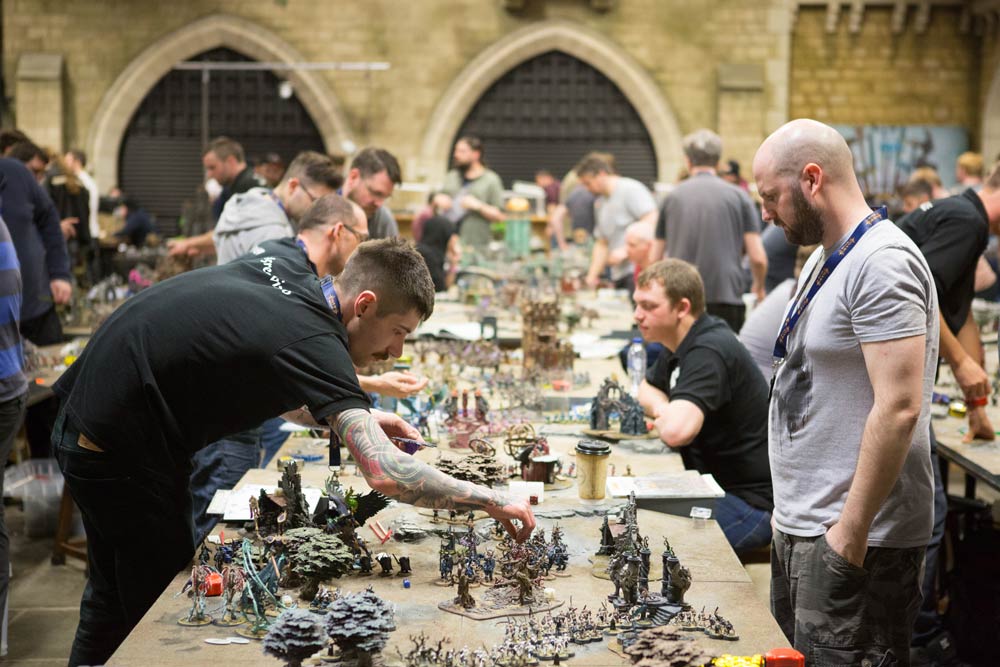Hey Everyone! Adam, FLG Head Judge and TFG Radio host, here to talk about how we currently do our metrics for placings at our 40K events.
Similar with how the pairings have been done in the past, the pairings were based on points for a long while. Since those early days there have been a few changes to how we do placings. Although we didn’t change it too much over the years, I did experiment with different ways of doing the placings at my local events. I tend to use these events as test beds for what we may use for Frontline events. They don’t always pan out but here is what we are currently using for our events. As always this could change due to new information and player input.
Wins, then Path to Victory
Just like in our pairings, the placings metric begins with these 2 things. Keep on remaining undefeated and you will rise to the top. Path to Victory is once again used as the second metric. In this case its a little different in that an early loss would have more of an effect on your placing. The longer you can go before getting your first loss, the better your placing in relation to someone who got an early loss but you both end up with the same record. So, for example, if you and another player are both 3-1 after 4 games. You got your loss in game 4 and the other player got their loss in game 1. You would be placed higher because you went further without a loss and thus are rewarded by having a higher placing.
Opponent Game Win %
Again, after Path to Victory, we come to Opponent Game Win % (OGW). To remind you, this is the average win percentage of all of a player’s opponents. So players with similar Path to Victory will be paired by their OGW. This is basically a modified Strength of Schedule metric. The higher your OGW shows that you played against tougher opponents throughout the tournament and are rewarded for it. This is better than straight battle points as a person that loses in the final, when using straight battle points, would sometimes drop as far in the placings as 5th or 6th place. OGW would just case that same player to drop to 3rd at the lowest so they would still podium even after just falling short. In the early rounds this doesn’t separate players too much which is why we ares till going onto the last 2 metrics.
Extended Opponent Game Win % and Battle Points
If things are still close, or the same, then the next metric takes it a step further. In addition to calculating your own OGW, the system will take into consideration the OGW of your opponent’s as well. So the system will generate the average OGW of your opponents and compare that to the other players with the same OGW. This should help in separating players since it further shows the difficulty, or ease, of other players’ games during the tournament but there is still the issue with the standings in the early rounds because not enough games have been played to flesh out the data, thus the last metric is used, Battle Points. Although some people may worry that this last metric allows for some manipulation of the system I believe that having it being the last metric will help to mitigate some of that concern. This also helps to separate players and does reward players in this early rounds for doing well in their first few games. As the tournament progress this should be less and less relevant.
And that’s how we are doing placings. I hope you found it helpful. Next week we will talk the paint requirements and why they are important. In the meantime don’t forget to buy your tickets for our events.
Also, if you happen to be in the Southern California area in August, sign up for my 40K tournament and try your hand at winning a Golden Ticket for GW’s World Championship in November.




